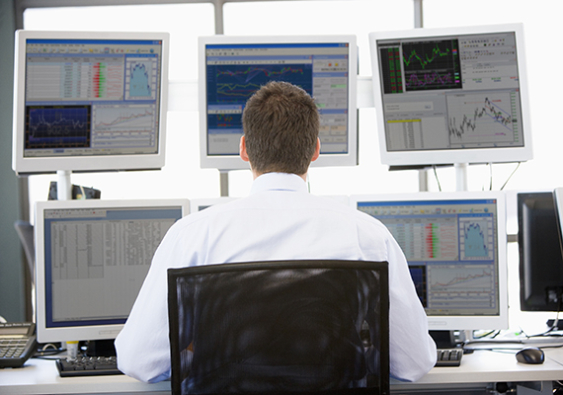
The trading of large blocks is rising — and trading tools must adapt to this new landscape.
According to TABB Group findings, block trading volume for asset managers rose to 19 percent in 2015. This level surpasses levels last seen in 2009 due to changes in investment strategies, access to new liquidity sources and new block trading methodologies.
Traders rounds up the leading buyside OMS on the buyside desktops.
These new numbers have put pressure on the tools that traders use to execute their trades. Forty-six percent of 100 U.S. buy-side traders interviewed by Tabb Group have had a change or upgrade to their EMS or OMS within the last 12 months, according to the survey findings.
The ability to trade blocks appears to be a critical part of trading strategies and leveraging an integrated workflow through an execution management system (EMS) and order management system (OMS) is essential for the buyside. These are the findings of Part two of TABB Groups 12th annual benchmark study, US Institutional Equity Trading 2016: Blocks & Trading Tackle (Part 2 of 3) that examines trends related to block trading, capital usage, conditional orders, and the role of the EMS and OMS in supporting buyside traders.
Todays buyside trader has more choice than ever on how, where and whether to trade in size, explain report co-authors Sayena Mostowfi, a TABB principal and head of equities research, and research analyst Valerie Bogard.
However, trading at an acceptable price in size still requires the buy-side trader to juggle trading experience, portfolio manager demands, volatile markets, and the many different models and trading venues offering both visible and hidden liquidity, according to a Tabb Group press statement.
Variety abounds for buyside traders between the different business models, broker algorithms and actionable indications of interest (AIOI) lighting up on their screens, said Mostowfi. New trading models, connections, products and systems are constantly widening the spectrum of block trading possibilities. Unfortunately, this steady evolution has also inflated concerns about jeopardizing unfinished flow, being second guessed or even missing a trade.
Alongside the ever-expanding choice of execution strategies, the tools that buyside traders use must simultaneously adapt with the market, say the TABB analysts. Of the 100 U.S. buyside head traders TABB interviewed for the study, 46 percent have had a change or upgrade to their EMS or OMS within the last 12 months.
Good visibility and fast access to liquidity are crucial elements of block trading, putting OMS and EMS vendors under tremendous pressure to evolve their systems and meet the changing market needs, said Bogard.
Part one of the Tabb Group series, US Institutional Equity Trading 2016: Part 1 of 3 Buy Side Emancipation or Purgatory, focused on the unprecedented drive by buy-side firms to implement new technology as they face heightened regulatory scrutiny.




